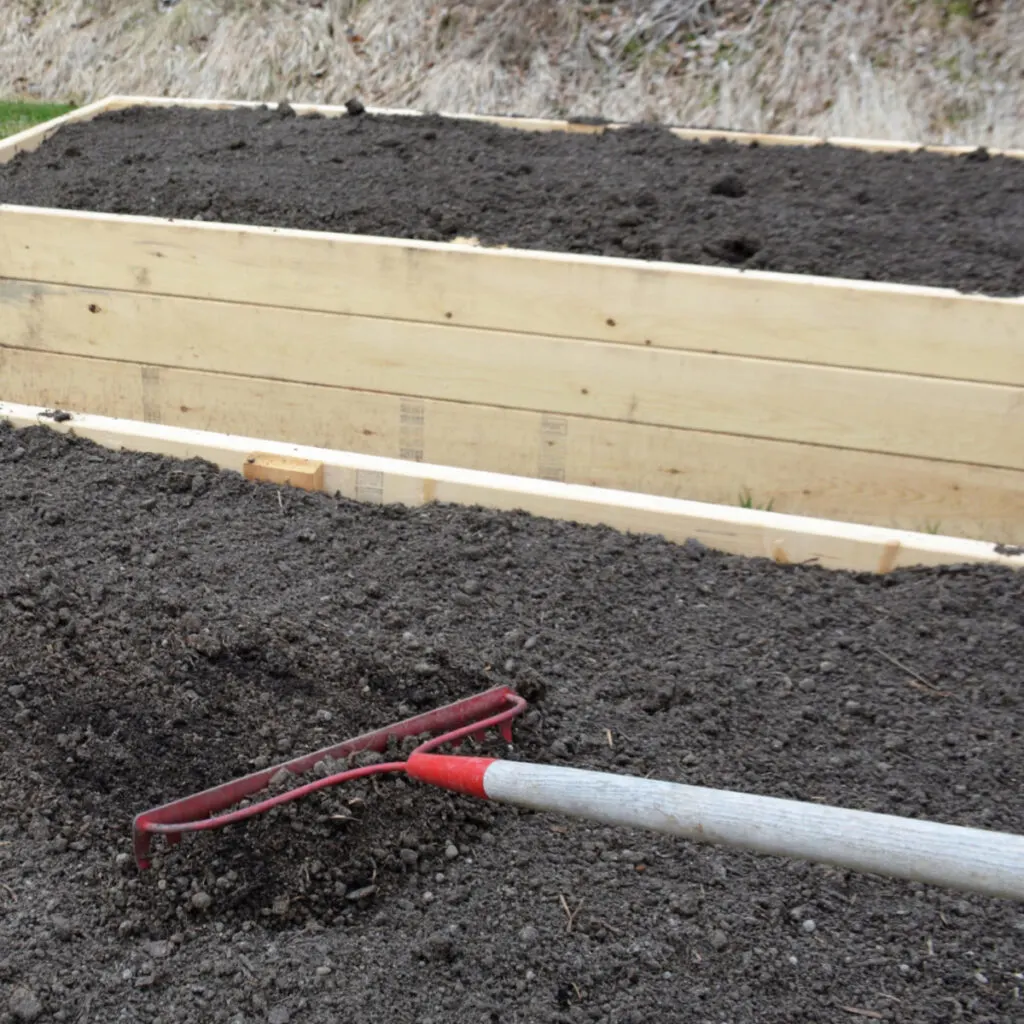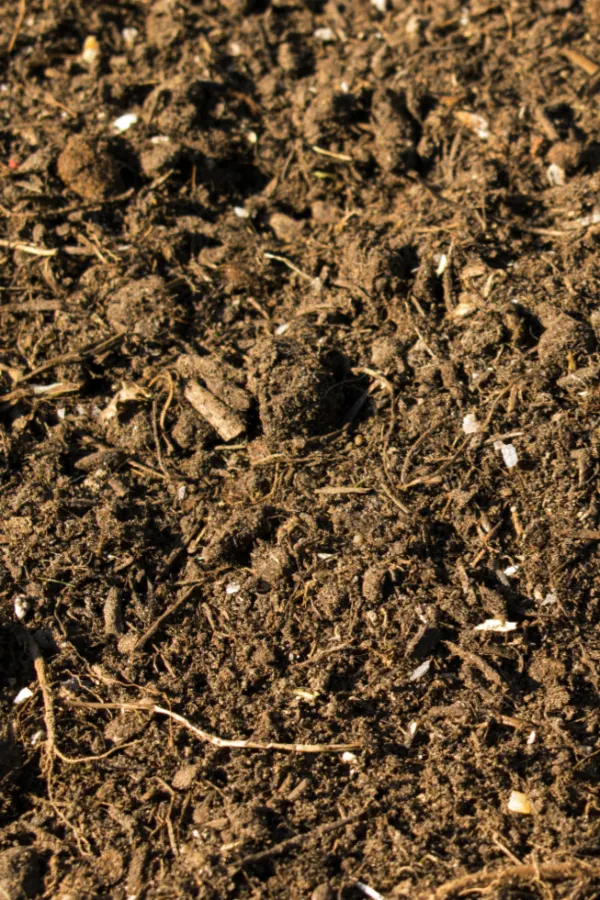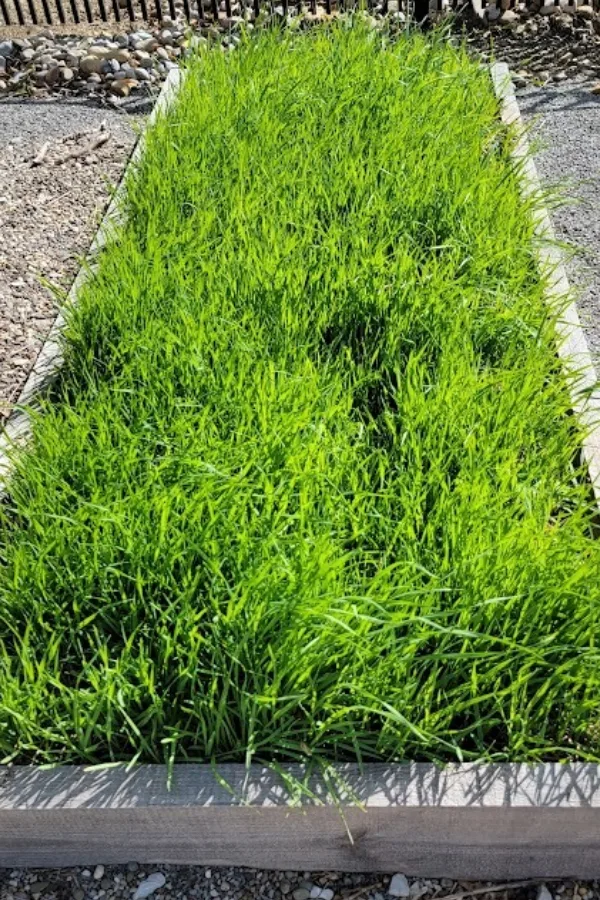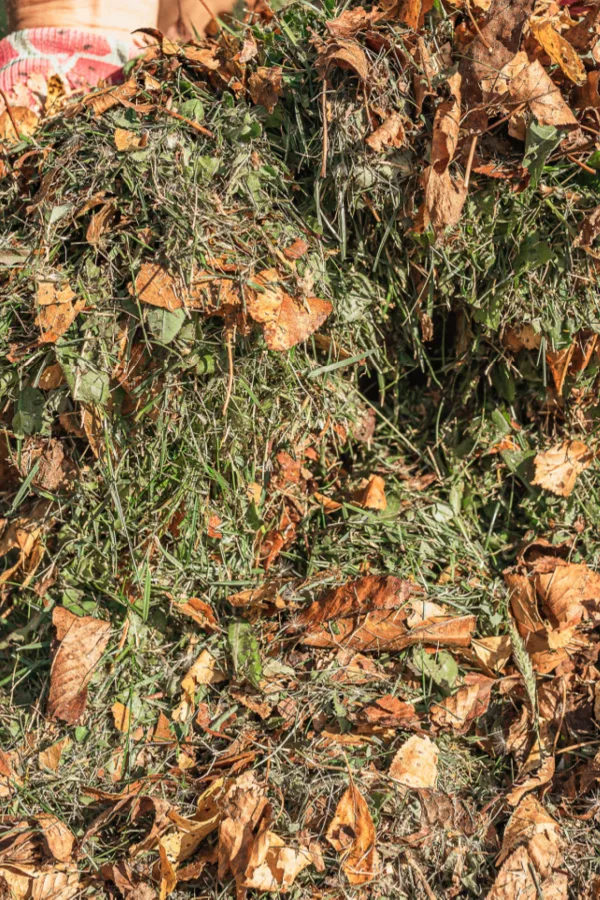There is no better time to rejuvenate and re-energize the tired, worn out soil in your raised beds than in the fall. And doing so will help you grow better than ever next year!
Let’s face it, after a long season of growing vegetables, flowers and/or herbs in a raised bed, the soil can be left lifeless, weak and depleted of nearly all of its nutrients. Especially if that soil has been growing plants for multiple years without any additional help.
One thing is for certain, no matter how fertile the soil was when you first put it into your raised beds, if you don’t add nutrients back to it after the end of each growing season, the next set of plants to go in will suffer.

Whether you grow annual flowers or vegetables in your beds, they both need and use a lot of nutrients to flower and produce. Although fertilizer can help to provide additional energy to growing plants, if the soil is weak, it can only do so much.
The good news is that re-energizing your raised bed soil in the fall can be quick and easy. And even better, there are a couple of simple ways to do it that require little effort. In fact, with any or all of three methods below, you can have your soil teeming with energy next spring, and ready to grow your best crops ever!
How To Rejuvenate Raised Bed Soil In The Fall – 3 Great Ways To Recharge Your Soil!
#1 Plant A No Till Cover Crop
Hands down, one of the easiest, most economical, and incredibly powerful ways to recharge raised bed soil is with a simple fall cover crop. And in spite of what you might think – it truly couldn’t be any easier to plant and maintain in a raised bed!
Cover crops have been used for centuries to recharge garden soil. Not only do they protect the soil from erosion through the winter months, they also cover it in a lush coating of foliage that keeps weeds and weed seeds from taking hold.

In addition, a cover crop refuels worn out soil. The roots of a cover crop drive down in hard soil to help loosen and break it up. And when the roots and foliage die off, they then give back all of their power to the soil.
How Cover Crops Add Back Energy – How To Rejuvenate Raised Bed Soil In The Fall
As soil wears out, it becomes dry, weak and feeble. And when it does, it has trouble holding nutrients or water. Because of that, plants suffer – even when you fertilize and water regularly. Why? Because the weak soil simply can’t hold either long enough to allow it to absorb into the plant’s roots.
All of the decaying foliage and roots of a cover crop contain key nutrients such as nitrogen, calcium and phosphorous. In addition, they also have trace minerals that are also vital for strong, healthy plant production.
As the cover crop breaks down, its dying and decaying plant matter releases those nutrients back into the soil. Even better, they also add humus and structure to the soil as they do, filling it with life. The result is healthy, strong soil that can once again grow great crops!

The Ease Of Planting Cover Crops In Raised Beds – How To Rejuvenate Raised Bed Soil In The Fall
Perhaps the best thing about planting a cover crop in a raised beds is just how easy it is. In fact, you can plant a cover crop in mere minutes!
Once you clear the old plants out of your beds, rake the bed gently to etch the soil. There is no need for heavy digging. Next, scatter your seeds and cover with a light coat (1/4 inch) of mulch. Straw, shredded leaves or even green grass clippings work great for this. Finish by watering in – and that’s it!
Once planted, the only task left is to simply watch it grow. And if you plant a no-till cover crop like peas or oats – they die off in the winter on their own. The oats are great for their thick covering and high nutrient value. Peas are full of nutrients as well and even help to fix nitrogen levels in the soil. Product Affiliate Link : Oats / Pea No-Till Cover Crop Mix
Once spring rolls around, all that is left to do is trim the decaying foliage back to the ground and plant. A string trimmer or hedge shears make quick work of the task. And once cut down, simply leave it on top of the soil to break down. Talk about easy!
#2 Layering In Compost – How To Rejuvenate Raised Bed Soil In The Fall
Another great way to add power, humus and structure to your raised bed soil is by layering in a coating of compost in the fall. This double-dose of organic material can help to re-power beds fast. It also adds major humus and structure to the soil as well.

Compost is teeming with energy. It is nature’s purest form of pure power and is wondrous for recharging beds. By simply covering your beds with a few inches of compost in the fall, you can replenish a large portion of your soil’s nutrients before spring planting ever rolls around.
There are actually a couple of ways to use compost to rebuild the soil’s fertility and structure. Many gardeners like to simply spread on a two to three inch layer in the fall and allow it to soak into the soil. Over the winter, the compost breaks down and leaches its energy into the surrounding soil.
Other gardeners like to mix in the compost right away to the soil and then plant a cover crop on top. This double-power method can really power raised bed soil up fast! If you don’t have compost on hand, you can use bagged compost with great results. Affiliate Product Link : Charlies Bagged Compost
#3 Adding Grass Clippings & Shredded Leaves – How To Rejuvenate Raised Bed Soil In The Fall
Two of the most powerful recharging materials for raised beds are usually plentiful in the fall – leaves and grass clippings! Leaves contain plenty of trace nutrients and humus as they break down. Green grass clippings contain lots of nitrogen and addition nutrients as well.

When used together and worked into your raised beds in the fall, they can add serious power back to the soil. The key with using both is to make sure they are shredded finely. A lawn mower (especially one with a bagging attachment) works well to do this. As does a small chipper / shredder.
By breaking the materials down before adding, they can decompose quickly over the winter months in the soil. In the process, they recharge and rebuild soil in a flash! Again, planting a cover crop once these materials are mixed in the soil can double up the power. Add in a bit of compost – and you can even triple the power!
Here is to rejuvenating your raised bed soil this fall. And, of course, to growing your healthiest and most productive plants ever next year! Once spring rolls around next year, be sure to see How To Get Your Raised Beds Ready For Spring Planting. For more on great fall chores, see our article on how to Recharge Old Potting Soil To Use Again.
Follow Our Facebook Page For Even More Great Tips! Simple Garden Life Facebook Page
Simple Garden Life is a website dedicated to keeping gardening fun, simple and enjoyable! We publish two new articles each week along with a new garden podcast episode every two weeks. This article may contain affiliate links.
